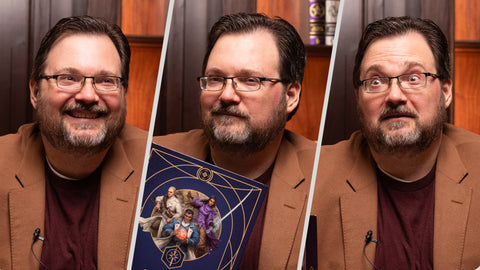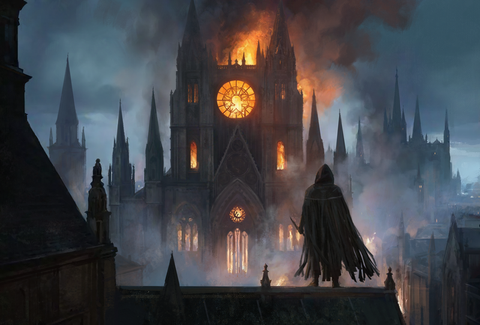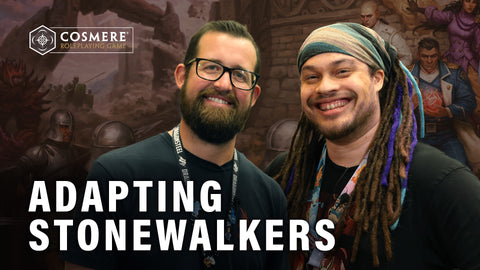If you love expansive worlds, long arcs, or just good old-fashioned role-playing games, then this is an episode for you. Bestselling author Brandon Sanderson joined game designer Johnny O'Neal (from Brotherwise Games, the team that brought you Call to Adventure, Boss Monster, and The Stormlight Archive miniatures) to talk about what went into putting together the upcoming tabletop RPG set within Sanderson’s expansive Cosmere universe.
If you're a fan of Sanderson's work or just an enthusiast for games that clearly have serious love and care put into them, then this conversation is one well worth checking out.

For those who found their way to this article without context, the Cosmere is an expansive interlinked universe in which various planets and cultures with different magic systems all share the same physical rules of underlying cosmology that bind them together. Sanderson has spent years building this universe throughout various series like Mistborn and The Stormlight Archive, and stand-alone novels like Warbreaker. But while each series is self-contained, they add to a deeper tapestry—the Cosmere—and that overarching narrative structure has been built up into something intricate and dynamic.
The question then becomes, how do you make a universe with so much detail and narrative workable in a playable RPG form? This is the challenge Sanderson and O'Neal address in this conversation.
The Art of Worldbuilding: Books to Games
Let’s dive in!
Sanderson discusses the hurdles faced in making an RPG that is faithful to Cosmere lore, but also approachable and fun for players.
It means you have to mix hardcore, fan-loved, deep lore with gameplay gentle enough that new players don't feel overwhelmed. In this interview, long-time game designer O'Neal explains how he tackled that problem—and the importance of creating mechanics both intuitive to play yet thematically cohesive with the original story.
For example, they talk through how to take Sanderson's perplexing magic systems and work them into the game. Magic in the Cosmere is less a tool you use to cast spells and more tied into physics, with nearly every type of magic having some kind of limitation or cost. This prevents power creep while still making the magic immensely powerful (and strategic), adding another layer to the gameplay.
As Sanderson says, “It’s not what the magic can do that makes it interesting, it’s what it can’t do.”
In terms of gameplay, that means providing players with a usable and meaningful magic system in an RPG setting. This also captures the innovation of play, discussed earlier, in the complex relationship between narrative and game mechanics.
Collaboration and Creativity
Sanderson isn't a stranger to collaboration—he has worked with various illustrators, editors, writers, and other creatives throughout the years—but doing it in an RPG setting brings new challenges.
O'Neal, who helped design games like the hit Boss Monster, has his own ideas of what great gaming should be, and it's really fun listening to the creative give-and-take between Sanderson as a writer/storyteller and O'Neal's insight into game development.
What's Coming for the Cosmere RPG
Sanderson and O'Neal tease where they'll go from here. They don’t spoil much, but they tease some fun fan theories. Whether it's broadening the scope to other parts of the Cosmere or adding new ways for us to play with what we are soon getting our hands on—they make it clear that this is only just the beginning. Both book fans and RPG gamers have reason to be excited.
Once again in this collaboration, we see gameplay and storytelling collide in a perfect mix. Watch the video to catch the full conversation and all of their great stories.




Comments (0)
There are no comments for this article. Be the first one to leave a message!